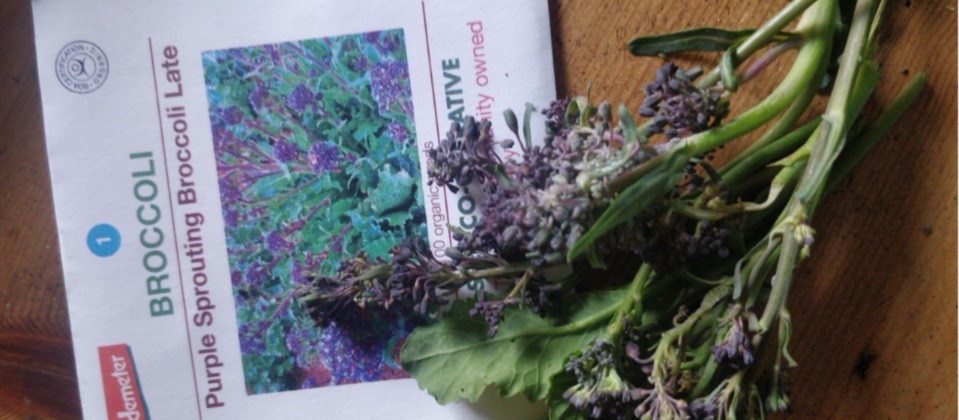“Of cabbages and kings” (Lewis Carroll, The Walrus and the Carpenter) …. there’s plenty out there about kings just now, so let’s focus on cabbages, the brassica family: kales, cabbages, broccolis, cauliflowers. One cabbage worth growing is actually a king! January King is a lovely dense headed cabbage that stands all the winter can throw at it.
Your work now is for the end of the year.
It’s time to sow all your favourite brassicas outside, ready to plant on to mature and feed you through the later part of the year. There’s a happy symmetry to finishing your crop of purple sprouting broccoli now just as you sow for next season. Some brassicas are quicker to mature, like summer calabrese (what they sell in shops in chunky tasteless heads called ‘broccoli’ – unlike the tender fragrant flowerheads you can grow yourself), and summer cauliflowers. Sow them all finely, thinly and not too deeply; there are lots of seeds to a packet so maybe you can share with your plot neighbours. Once germinated, you’ll need to thin out the seedlings to give them space to grow into good sized plants. It feels hard to do that sometimes! So comfort yourself by giving the thinnings away or by scattering them in your next salad. Because they’re going to be in the ground for quite a while, make sure you enrich the soil with your best compost, and choose a bed that grew peas and beans last season which may have helped to fix nitrogen in the soil, which the brassicas love, being basically leafy. Protect the seedlings against slugs, snails and birds; caterpillars and aphids can be tolerated if you encourage their predators, like ladybirds and wasps and beetles, perhaps by sowing some calendula or nasturtium close by, and just accept a few losses.
Now is also a good time to sow leaf beet/perpetual spinach and chards, which come in green, yellow or red stemmed varieties. These are stalwart crops, which also stand a full year in the ground, giving you fresh leaves to eat full of vitamins and minerals, and so they like your rich compost mulch too. These seeds are much bigger and so it is easy to sow them individually, but again, thinnings make good eatings.
Comfrey is a wonderful plant with many medicinal properties, and with flowers that attract bees and other pollinators. It also makes wonderful plant fertiliser. If you’re planting later potato crops now, a layer of comfrey in the bottom of a trench will provide food for the maturing tubers. You can add the cut leaves to your compost as a tonic and activator. And you can make a rich brew by soaking the leaves in rain water, then after a few weeks add a cupful to a watering can of water to provide your fruiting crops, tomatoes, chillies, peppers, with the nutrients they need. Generally too, make sure you collect as much rain water as you can – from any surface, like a shed or greenhouse; it saves huge amounts of energy cleaning and pumping water to taps, and saves you energy back and forth with your watering can to your nearest tap on the site.
It’s also time to sow courgettes and squashes and cucumbers, indoors on a window sill or in your greenhouse. A piece of glass on top of the pots will warm the soil enough to get them going well, and then grow them on to plant out when there is no longer any threat of a frost – often the first week of June in York. There are lots of interesting varieties of squash, but the most useful are those you can store somewhere cool and airy right through till March next year. You do need a fair bit of space to grow them. So consider if you really are making the most of your whole plot, or if there are areas you could bring into cultivation to grow even more lovely produce?
Plotlines, written by one of our York allotmenteers, is a new twice monthly blog aimed at anyone who would like some guidance about growing on an allotment.


